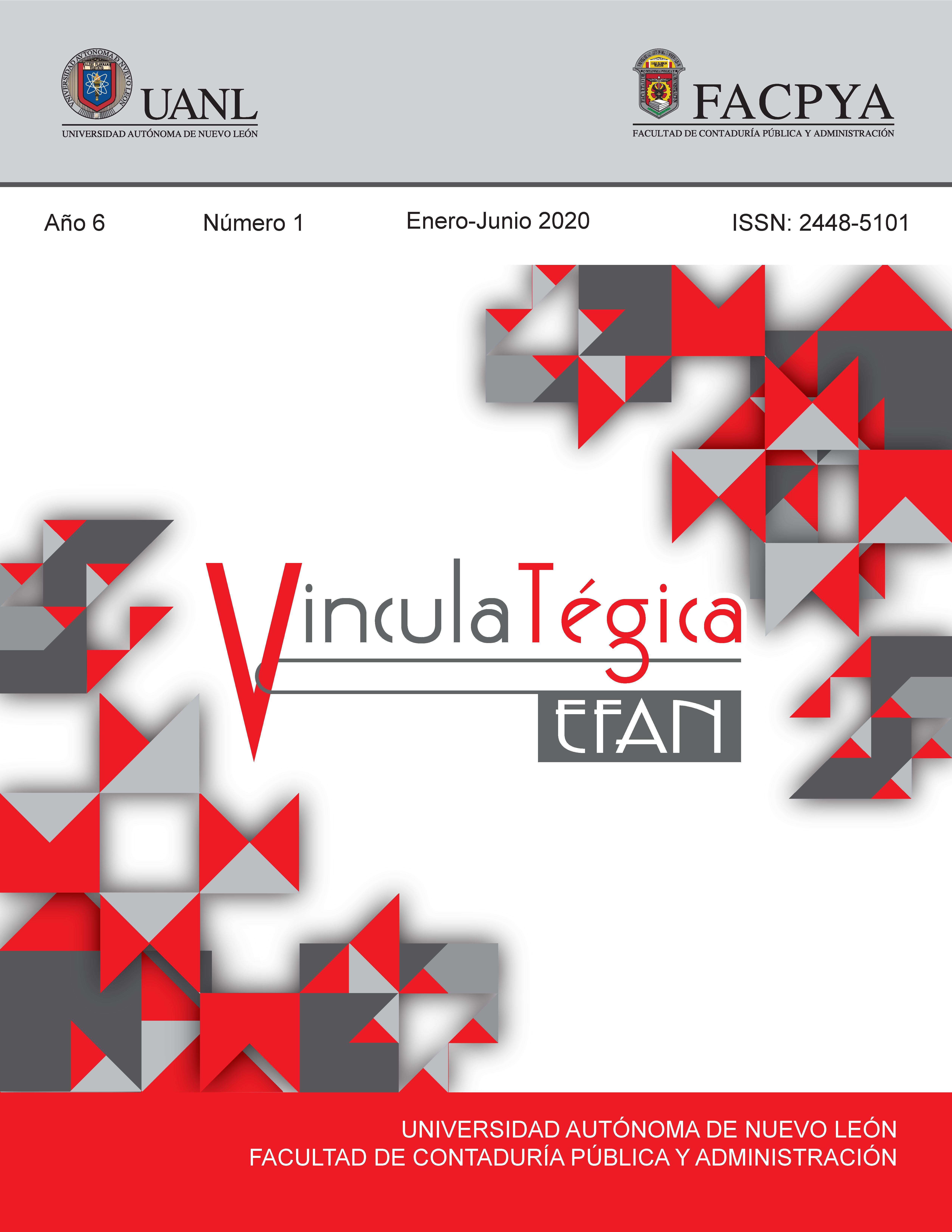Aproximaciones teóricas de los factores que determinan la innovación incremental en emprendimientos artesanales
DOI:
https://doi.org/10.29105/vtga6.1-592Palabras clave:
emprendimiento artesanal, innovación incremental, manufactura, EcuadorResumen
El presente artículo ofrece aproximaciones teóricas
alrededor de la innovación incremental del sombrero de
paja toquilla en los cantones de Azogues y Biblián,
Ecuador. Se parte de una revisión sistemática de la
literatura para conocer los factores que impulsan la mejora
de productos artesanales, habiendo determinado a la
orientación al mercado, autonomía, recompensas por
innovación, transferencia del conocimiento y asociatividad
como las variables predictoras del estudio. Se recurre a
estudios similares en contextos geográficos distintos y se
alcanza a corroborar, que la innovación incremental
prevalece sobre la radical, tratándose de productos
artesanales. Se identifican los beneficios de la innovación
incremental expresados en el incremento de los ingresos de
los artesanos innovadores. En consecuencia, es posible
mejorar las condiciones del nivel de vida de los artesanos
toquilleros del Ecuador, generando estrategias innovadoras
de orientación al mercado, fortalecimiento de la capacidad
socio - organizativa y productiva; y, la transferencia del
conocimiento ancestral milenario.
Descargas
Citas
Albornoz, M. (2009). Indicadores de innovación: las dificultades de un concepto en evolución.
Astudillo, S., Carpio, X., Cordero, F., y Pozo, S. (2013). El efecto de la innovación en las mipymes de Cuenca, Ecuador. Estudio observacional descriptive transversal. Revista Maskana, 4(2), 35-46. DOI: https://doi.org/10.18537/mskn.04.02.03
Baena, E. Sánchez, J.J y Montoya, O. (2003). El entorno empresarial y la teoría de las cinco fuerzas competitivas. Scientia et Technica. Año IX. No.23.UTP. ISSN 0122-1701.
Banco Central del Ecuador (2019). Boletín de Datos Macroeconómicos, Quito. Ecuador.
Barba, E. (2015). Innovación 100 Consejos para Inspirarla y Gestionarla. Barcelona. España. Serveis Editoriales.
Bernal, O. I. V., Ríos, J. A. B., Giraldo, J. A. L., y Vargas, F. J. A. (2019). Asociatividad empresarial y liderazgo ambidiestro como generadores de innovación. Revista de ciencias sociales, 25(2), 51- 72. Burgos, J.M., DOI: https://doi.org/10.31876/rcs.v25i2.27333
Burgos, J.C., Márquez, C. y Tello, G. (2019). La orientación al mercado y el desarrollo sustentable en los emprendimientos solidarios en el Ecuador. Revista Espacios. 40(37), p.5.
Censo de Tejedores y Tejedoras de Sombrero de Paja Toquilla (2011). Fundación Carlos Pérez Perasso. Informe Final, pp. 1-50. Azogues, Ecuador.
Conill, J. (2013), La invención de la autonomía. Eidon 39: 2-12. Dimov, D. (2007). From opportunity insigth to opportunity intention: The importance of person situation learning match. Entrepreneurship Theory and Practice. Hoboken. 31(4), 461-583. DOI: https://doi.org/10.1111/j.1540-6520.2007.00188.x
García, M., Maldonado, G., y Alvarado, A. (2019). Innovación abierta y rendimiento financiero en la industria manufacturera de México. Revista Venezolana de Gerencia. Número 87, pp. 826-842.
González, C. H. y Hurtado, A. (2014). Influencia de la capacidad de absorción sobre la innovación: un análisis empírico en las mipymes colombianas. Estudios Gerenciales. Vol, 30, pp. 277- 286. DOI: https://doi.org/10.1016/j.estger.2014.02.015
Gravano, A. (1998). Consideraciones sobre el Concepto de Artesanía en América Latina. Folklore Americano. Num. 59. Prisma. Database with Hapi Index.
Grant, R. M. (1996). Hacia una teoría de la empresa basada en el conocimiento. Strategic Management Journal. Vol. 17, 109-122.
Hajipour, B., Rahimi, F., & Hooshmand, M. (2013). Market orientation: Review and new research agenda. Journal of Management Research, 5(1), 92-111. DOI: https://doi.org/10.5296/jmr.v5i1.2793
Hernández, J., Domínguez, M., y Caballero, M. (2007). Factores de innovación en negocios de artesanía de México. 16(2), pp. 353-379.
Hurley, R., & Hult, G. T. M. (1998). Innovation, market orientation, and organizational learning: An integration and empirical examination. Journal of Marketing, 62(3), 42-54. doi:10.2307/1251742. 452 DOI: https://doi.org/10.1177/002224299806200303
Instituto Nacional de Patrimonio Cultural (2014). Informe de investigación del estudio diagnóstico del sector manufacturero de las artesanías en las provincias de Azuay, Cañar y Morona Santiago. Cuenca, Ecuador.
Malo, C. (1991). Las artesanías en el Marcos, S. (2011). Sistema de retribución. Recompensa total: El nuevo contrato. People Maters. Harvard deusto business review. Ecuador. Melo, L. I.,
Melo, M.M., y Fonseca, D. E. (2017). The Associativity: a local development strategy for Ocamonte (APCO) coffee growers in Santander, Colombia. Acta Agrom. 66(4), 538- 543. DOI: https://doi.org/10.15446/acag.v66n4.61389
Ministerio de Industrias y Productividad (2018). Informe de investigación de la vocación económica y productiva. Zona de planificación regional 6. Cuenca, Ecuador.
Nunnally, J. (1967). Psychometric Methods. New York: McGraw- Hill Book Co. Olea, J., Contreras, O. F. y Barcelo, M. (2016). Las capacidades de absorción como ventajas competitivas para la inserción de Pymes en las cadenas globales de valor. Revista Estudios Gerenciales. Vol. 32, 127-136. DOI: https://doi.org/10.1016/j.estger.2016.04.002
Ouchi, W. (2000). The secret of TSL, Pearson, Estados Unidos.
Pastor, M., Rodríguez, P., y Balbinot, Z. (2019). Orientación Emprendedora, Orientación al Mercado y Capacidades Dinámicas en Pequeñas y Medianas Empresas. Gestäo e Regionalidade. 35(105), pp.67-82. DOI: https://doi.org/10.13037/gr.vol35n105.5302
Pineda, J. (2017). Estudio de Innovación en la Fabricación de Productos Artesanales Derivados de la Cañar Flecha. Universidad Tecnológica de Bolívar. Cartagena. Colombia.
Pro Ecuador Oficina Comercial del Ecuador en Hamburgo- Dirección de Inteligencia Comercial e Inversiones (2018). Estudio de mercado: Sombreros de paja toquilla en Alemania.
Plan Nacional para el Buen Vivir, Toda una Vida, (2017). Diagnóstico, ejes, políticas, metas y estrategias. Secretaría Nacional de Planificación SENPLADES. Quito, Ecuador.
Ringberg, T., Reihlen, M., & Rydén, P. (2019). The technology-mindset interactions: Leading to incremental, radical or revolutionary innovations. Industrial Marketing Management. 79, 102- 113. DOI: https://doi.org/10.1016/j.indmarman.2018.06.009
Ryan, R. M., Kulk, J., & Delci, E. L. (1997). Nature and autonomy: Organizational View of social and neurobiological aspects of selfregulation in behavior and development. Development and Psychopathology, (9), 701-728. DOI: https://doi.org/10.1017/S0954579497001405
Santiago, D., Cruz, B., Acevedo, J., Ruíz, A. y Maldonado, J. (2015). Asociatividad para la Competitividad en la Agroindustria de Oaxaca, México. Revista Mexicana de Agronegocios, 36(ND), 1167-1177.
Sinchi, T. C. y Uruchima, K. M. (2018). Evolución histórica y cultural del sombrero de paja toquilla en el cantón Biblián, Provincia del Cañar. Universidad del Azuay. Cuenca, Ecuador.
Velásquez, G.; Salgado, J. (2016). Innovación tecnológica: un análisis del crecimiento económico en México (2002-2012: proyección a 2018). Análisis económico, vol. XXXI, núm. 78. Universidad Autónoma Metropolitana Unidad Azcapotzalco Distrito Federal, México.
Vilaboa, J., Díaz, P., Platas, D. E., Ortega, E. y Rodríguez, M.A. (2006). Productividad y autonomía en los sistemas de producción ovina: Dos propiedades emergentes de los agros ecosistemas. Inci. 31(1).
Zapata, G. J. (2016). La centralización en la organización y los incentivos intrínsecos: Un estudio en medianas empresas. Contabilidad y Negocios (11) 22, 123-136 / ISSN 1992-1896. DOI: https://doi.org/10.18800/contabilidad.201602.009
Descargas
Publicado
Cómo citar
Número
Sección
Licencia

Esta obra está bajo una licencia internacional Creative Commons Atribución 4.0.
Los autores que publiquen en la revista VinculaTégica EFAN aceptan el siguiente aviso de derechos de autor:
a). Los autores conservan los derechos de autor y ceden a la revista el derecho de la primera publicación de la obra bajo una licencia de atribución de Creative Commons. Esta licencia permite a otros compartir la obra siempre que se reconozca la autoría original y la publicación inicial en esta revista.
b). Los autores pueden establecer acuerdos contractuales adicionales de manera independiente para la distribución no exclusiva de la versión publicada en la revista (por ejemplo, publicarla en un repositorio o incluirla en un libro), siempre que se reconozca la publicación inicial en esta revista.
c). Se permite a los autores autoarchivar su trabajo en repositorios institucionales o en su propio sitio web antes y durante el proceso de envío, ya que esto puede fomentar intercambios productivos y aumentar la citación temprana y general del trabajo publicado.







